Defining Research Focus Areas
Arts and humanities education in the twenty-first century requires deep investment in core disciplinary competencies as well as an increased emphasis on the transformative potential of cross-disciplinary collaborations. The Global Arts + Humanities Discovery Theme has identified four cross-disciplinary focus areas for long-term investment. The focus areas provide a conceptual and material infrastructure to strengthen research networks across the university and are guided by three key principles:
- Address global challenges through an understanding of the role of the arts and humanities as part of knowledge ecologies implicated in social, technological and environmental systems.
- Add strength on strength by building on faculty leadership and expertise in key spheres.
- Provide a conceptual infrastructure to generate new cross-disciplinary collaborations and discoveries and secure external grants to support related initiatives
Community
Community amplifies the culture of engagement and service that is part of the university's mission by demonstrating the transformative power of critical and creative practices. Participants co-design collaborations with communities — including those local to Columbus — that embrace diverse perspectives including cross-disciplinary methods and practices to advance public-facing, partner-engaged work.
Project Description
In an era marked by global migration, war refugees and terrorism, it is more important than ever to understand both how the uprooted, displaced, and re-located find ways to constitute community and how receiving communities constructively incorporate new residents. What are the tensions that human mobility generates? How do constructions of place affect the well-being of uprooted and host communities? How do our policies, institutions, and physical environment as well as our everyday performative strategies impact the lived reality of long-term residents and new arrivals? Who is included and excluded from the process of community formation, and why? What performative phenomena impede community formation? Where in our existing social structure do we find opportunities for performative interactions across difference? How does placemaking at the grassroots level interact with city or state-level initiatives to engineer attractive and welcoming environments? Be the Street seeks to respond to these urgent questions by developing performance work in partnership with local communities in order to reflect upon the making and re-making of place.
Principal Investigators
Katherine Borland (Comparative Studies) and Moriah Flagler (Theatre)
Project Description
This project will create an interdisciplinary intervention into enigmatic astronomical phenomena known as black holes. The collaboration combines astronomy, orchestral music and elements of theatrical design in a performance that will be educational and artistically compelling.
Core Facilitators
Tom Dugdale (Department of Theatre) with Paul Sutter (Department of Astronomy) and Jacob Reed (local composer)
Project Description
This project will create cross-disciplinary community dialogue of the interconnectedness of mental illness and dance utilizing American-Jewish choreographer Anna Sokolow’s masterwork Rooms as a platform for campus-wide discussion about mental health.
Core Facilitators
Nena Couch (Thompson Library Special Collections), Valarie Williams (Department of Dance)
Project Description
Performing Afghanistan offers an opportunity for students, faculty, staff and the Columbus community to engage with one of the most critical issues of our time — women’s voices and the refugee crisis — through witnessing arrange of performance events grounded in Afghan experience. It will create a unique learning opportunity that will be maximized by faculty in a number of departments.
Core Facilitators
Lesley Ferris (Department of Theatre), Kevin McClatchy (Department of Theatre), Janet Parrott (Department of Theatre), Alam Payind (Middle East Studies Center)
Project Description
The work of the Public Narrative Collaborative is grounded in the cultural pervasiveness and widely-acknowledged power of stories and storytelling. Once thought to reside safely in the domains of literature, history, and folklore, narrative is now recognized as significant in just about every sphere of human activity: in politics, medicine, religion, education, law, business, sports, the art world, and on and on. In addition, narratives appear in a range of media: print, radio, film, television, comics, theater, the digital, painting, sculpture, and curated art exhibitions. Furthermore, narratives have countless purposes, some of which frequently overlap: reporting, explaining, interpreting, evaluating, entertaining, socializing, persuading, and more. Narrative, in short, is a way of knowing and of doing. The project is called a "Collaborative" because it brings together a range of high-performing OSU scholars and artists around their shared interest in promoting innovative teaching, research, and creative projects that explore the nature, functions, and effects of stories and storytelling.
Principal Investigators
Lisa Florman, Sarah Iles Johnston, Jim Phelan, George Rush
Im/Mobility
Global migration and mobility are defining issues for the twenty-first century and signify major societal challenges both nationally and internationally. Initiatives in Im/mobility engage the multifaceted aspects of migration and movement that people experience from transnational and local movements to the spatial and social isolation of communities and individuals stemming from social, cultural, political, environmental and economic factors. Initiatives also address past and present experiences of forced removal, (re)settlement and displacement of Indigenous peoples. Current projects include Migration, Mobility and Immobility, and the Human Rights in Transit Study Abroad Program.
This special initiative funded three cross-disciplinary research projects in 2019-2020:
- Ancient Indigenous Monuments and Modern Indigenous Art
- Indigenous Ohio: Ohio State and Native Arts and Humanities Past and Present
- K’acha Willaykuna: Andean and Amazonian Indigenous Arts and Humanities Collaboration. This initiative emphasizes comparative, cross-cultural and cross-disciplinary research and creative practice that connects regional indigenous histories, experiences and expression to hemispheric and global pan-indigenous debates.
Project Description
During 2018-2020 the Migration, Mobility, and Immobility Project launched a series of collaborative activities, including a visiting scholar-/artist-/activist-in-residence program, teaching collaborations, community outreach initiatives, talks, exhibitions, film screenings and performances, and a grants program for faculty, graduate and undergraduate research and creative work. In October 2019, it organized Moving Subjects: Migration, Mobility, and Immobility Week.
Project Highlight
Moving Subjects: Migration, Mobility and Immobility Week was a week-long series of events that showcased the cutting-edge research and creative work of Ohio State’s arts and humanities faculty, students and community partners. The week highlighted the power of creative practices and humanities methods to address critical local and global challenges.
Moving Subjects Week began on Monday, October 14, 2019, with a celebration of Indigenous People's Day and continued throughout the week with music and dance performances, talks, book readings and a graduate and undergraduate forum. Moving Subjects Week culminated with a community celebration for Day of the Dead on Saturday, October 19, 2019. Becca Heller, founder and director of the International Refugee Assistance Project and MacArthur Genius Award recipient, provided the keynote address on Thursday, October 17, 2019.
- Read the full schedule of events
- View video of the keynote address
- Read student reflections
- Read essays and blog posts and view photos (scroll to bottom of page)
Livability
Livability is a research area committed to cross-disciplinary collaboration between creative and scholarly inquiry and relational frameworks that conjoin human and nonhuman agents in the study of material interactions. Livability initiatives focus on the potential of the arts and humanities to address challenges presented by the climate crisis, struggles for livable communities, environmental justice, land and food sovereignty, and social rights in health and cultural systems.
Project Description
The Building Healthcare Collectives project emphasizes humanities expertise in care. We create an infrastructure where healthcare professionals, humanities researchers, community partners, and activists can work together to solve key problems facing the U.S. healthcare system. These problems include increasing costs, unequal access to care, unequal quality of care, and rapidly changing technological processes. Following the Literate Care model, we bring together interdisciplinary research teams focused on shared decision-making, preventative care, and a focus on health disparities due to social, economic and environmental factors.
The BHC project is funded by the Humanities Without Walls initiative and led by researchers from Michigan State University and The Ohio State University. We are seeking BHC Project Fellows who are interested in participating in or leading action-oriented health equity research. For more information, visit the project website website.
Project Description
Collaboration for Humane Technologies is a network of artists, scholars and researchers exploring the interplay between physical and virtual experience and seeking to intervene directly in creating better futures. We are an interdisciplinary community. We embrace collaboration, nuance and complexity. We make games, virtual reality experiences, interactive installations, animations, data visualizations, objects, live performances and whatever else we need to invent given the problem or need we are tackling. Our projects foreground well-being, movement, creative open-ended play, compassion, personal agency and collaboration. We are inspired by design innovator Bret Victor's provocation:
“What might it be like to work, to play, to share and to think in more dynamic mediums that access our full multi-sensory human capacities?”
This question sits at the heart of our research and our varied definitions of humane tech - that is, technology that is responsive to how humans learn, think, and create and thrive. With these humane working assumptions, we focus each year on a different theme.
For more information, visit the project website.
Project Description
Livable Futures fosters creative, collective thinking and doing in the context of planetary crisis and unpredictability. We start from the understanding that practices in the arts and humanities are uniquely positioned to create and model more desirable life worlds and to re-conceptualize and generate meaningful public dialog on our changing planetary conditions. We showcase the role of the arts and humanities in responding to the aesthetic, political and social realities wrought by planetary change and devastation. And we enthusiastically take up scholar and activist Adrienne Maree Brown’s galvanizing question:
“How do we turn our collective full-bodied attention toward collaboration, if that is the way we will survive?”
The planetary change implied in the Anthropocene urges us toward cooperative thinking and learning, public dialog, emergent strategies, creative responses, non-competitive critical thinking, and innovative approaches. Livable Futures are collaborative, they integrate artistic, scientific and humanistic methods and practices; and they are attentive to the fact that social difference and inequality are constitutive to planetary change.
For more information, visit the project website.
Project Description
This project will emphasize research and teaching in the areas of Medical and Health Humanities and the Arts and is currently under development. If you're interested in the area, please contact area Project Director, Professor Julia Nelson Hawkins.
Project Description
This choreographic work will reflect local and global perspectives on the effects of climate change and share an artistic process that incorporates scientific and artistic research in the form of a rigorous performance experience for an international group of professional dancers and Ohio State dance students.
Core Facilitators
Daniel Roberts (Department of Dance) and Jeanine Thompson (Department of Theatre)
Project Description
The Woods is a mixed-reality, interactive installation that will address the perils of social isolation by promoting connections between people and actively engaging them through play. It will prompt an examination of human connectivity through the lens of contemporary gaming technology.
Core Facilitators
Kyoung Lee Swearingen (Department of Design) with Marc Ainger (School of Music), Scott Swearingen (Department of Design), Rosalie Yu (Columbia University), Skylar Wurster (undergraduate student researcher, School of Engineering)
Methods and Practices Amplifier
This research area emphasizes methodological exchanges and practices that showcase the integration of arts and humanities methods across the disciplines, emphasize innovative methods and practices that have social impact, and engage methodological challenges through collaboration.
The Amplifier creates a space where new methodologies and practices within a discipline or field can yield innovation and discovery in another field, as well as projects that focus on methodological developments and their impact in shaping innovation in research, creative practices, and pedagogy within disciplines and fields as they refine the boundaries of inquiry in the twenty-first century.
Bodies in Virtual Space: Bridging Distance in Arts and Humanities Methods and Practices (June 4, 2020)
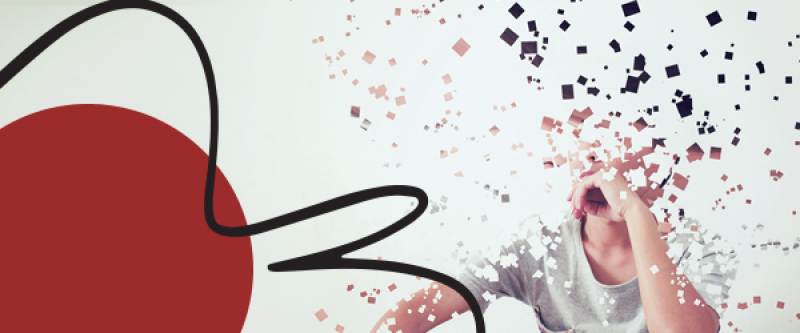
This inaugural Methods Conversation convened researchers and practitioners from GAHDT projects to discuss what happens when activities that presuppose bodily co-presence must move to virtual space. We considered what is lost, gained, maintained and changed in this transposition. We can no longer take the body for granted: what light does this shed on our methods and practices?
On June 4, 2020, over 100 participants joined the inaugural Methods Conversation via Zoom. The event was moderated by Methods and Practices Faculty Fellows Dorry Noyes and Susan Van Pelt Petry. Presenters included Shadrick Addy, visiting assistant professor, Department of Design and ACCAD; Jacklyn Brickman, GAHDT graduate fellow, Department of Art; Trevor Marcho, GAHDT graduate fellow, School of Music; Susan Melsop, GAHDT faculty fellow, Department of Design; Ryann Patrus, Graduate student, Department of Comparative Studies; Maurice Stevens, Professor, Department of Comparative Studies; and Jasper Waugh-Quasebarth, GAHDT postdoctoral fellow, Ohio Field School - Center for Folklore Studies.
Event content
- Opening remarks by Dorry Noyes
FileOpening remarks68.38 KB
- Closing remarks by Susan Van Pelt Petry
FileClosing Remarks63.07 KB
- Event video
- GAHDT Affinity Learning Communities | GAHDT Methods and Practices Amplifier is seeking to launch affinity Learning Communities for the purpose of inviting faculty and staff to gather virtually around mutual issues in their pedagogy and research. The GAHDT staff will initiate each group, but our hope is that each group will provide their own organizing. The GAHDT Faculty Fellows will continue to check in, gather ideas or issues, and in general support the conversations. The Learning Communities will have a presence on the GAHDT website, in time, in order for greater visibility of the work of faculty and staff in the Arts and Humanities. If interested, please complete our brief registration webform.
Follow-up resources
- From Shadrick Addy and Susan Melsop | Equality Hub
- From Jared Waugh-Quasebarth | Rendville Cemetery project
- Jacklyn Brickman
- Trevor Marcho | Resources about drumming, music and dance for Parkinson’s
- Ryan Patrus and Maurice Stevens | Working document from their event
Other resources offered from guests
- From Richard Fletcher | If anyone is interested in virtual worlds and issues of Indigenous knowledge (and the vital issue of mediation, especially for white settler scholars), check out Aboriginal Territories in Cyberspace
- From Margaret Price | Here’s a worksheet on forming pods for mutual aid (slightly different from classroom pods, but same principle).
- From Maurice Stevens | Have you checked out HyFlex?
- From Robert Livingston (.28) | The Humanities Institute is collecting and collating A&H responses to COVID-19 at “Humanities Connects.” Let him know if you have additions or recommendations.
- Dorry Noyes adds: See also the Center for Folklore Studies webpage on "COVID-19 Resources for Folklorists," including a section on socially-distanced fieldwork and interviewing plus links to COVID-19 documentation projects.
- From Alex Oliszewski(.1) | Oliszewski has recently been nominated as the chair of a committee for the development of online performance as part of his role as the VC of Technology within the USITT organization. He invites participation from anyone who would like to join in these efforts.
- From Henry Griffy(.2) | Griffy works in the Office of Distance Education and eLearning and would love to help link folks in working groups with the sundry tools Ohio State makes available (and colleagues who specialize in helping folks use them well).
- From Susan Van Pelt Petry (.37) | Resources gathered by The Alliance for the Arts in Research Universities (A2RU), particularly for teaching in visual and performing arts. Also includes resources for intercultural collaboration online.
- From Dr. Cassie Rosita Patterson | Tips for making Zoom meetings and events accessible for people who phone in:
- Always send out the full Zoom invitation, which includes phone dial-in options. You can do this by clicking “copy meeting invitation” in the Invitation Link section of your meeting page.
- Change the name of phone participants so they don’t just show up as a phone #. This allows everyone on the video call to identify the phone caller.
- Ask people to identify themselves before speaking throughout the entire conversation, that way those listening in can attach ideas and comments to people.
- Read out important chat commentaries or ask those who have typed them to read them out.
- Provide links to all participants in a follow-up email since those phoning in cannot see the links in the chat.
- Check in with phone participants to see if they have anything to contribute to the conversation, since they can get sidelined because you cannot see them, and they cannot raise their hands or contribute via chat.
- Try phoning in to a Zoom meeting and experience it for yourself so that you can make future calls more accessible for others.
- Share these tips with other meeting and event Zoom schedulers so that they’re aware and less phone callers have to take extra steps to get access to the same information.
Content inspired by event
- 19ChoreOVIDS by Susan Van Pelt Petry
A series of 19 videos made during the COVID-19 era, including dance, movement, performance and more. Filmed on Zoom and edited edited by Ric Petry. Visit Van Pelt Petry's blog for posts describing the video-making process and for links to the videos themselves.
The Mobile Methods and Practices Series aims to foster cross-disciplinary dialogue on arts and humanities methodologies and practices. Typically meeting monthly on and around the university’s campus, this series is free and open to all faculty, staff and students and to the public. To host a mobile methods and practices event, please submit a small grants application. Requests are accepted on a rolling basis and are reviewed by the Leadership Committee. These requests must be submitted not less than 21 days before the event. Event requests should not exceed $1,500.
Series Highlights
(Content forthcoming)
Pilot Projects
In 2016, Global Arts + Humanities Discovery Theme funded 11 two-year pilot projects. They were: Collaboration for Humane Technologies, Contemporary Art and its Publics, Environmental Humanities, Human Rights in Transit, Global Mobility Project, Transnational Black Citizenship, The Emergence of Number, Be the Street, Project Narrative: Applied Narrative Opportunities, From Homer to the Qur’an: The Ancient World at OSU, and Science and Technology Studies.
Be the Street brought together faculty and graduate students across five fields (theatre, dance, Spanish and Portuguese, comparative studies and city planning) who continue to work in the interdisciplinary area of Performance Studies together with Columbus community groups to create a series of ethnographically informed theatre or dance productions exploring migration and community transformation.
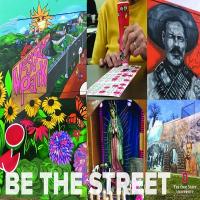
Project highlight
In this time of intense global migration and displacement, Be the Street, a devised performance partnership with local communities addressed questions of place-making. The project involved collaboration between faculty from the departments of theatre, Spanish and Portuguese, dance and comparative studies, and community members from the Hilltop neighborhood of Columbus who together created performances that addressed a range of serious issues from domestic violence and addiction to school lock-downs. Be the Street will continue their important work and build on existing partnerships established with community organizations through the leadership of Moriah Flagler, an expert in community-based devising and digital storytelling and a Global Arts + Humanities Discovery Theme postdoctoral researcher.
Collaboration for Humane Technologies fostered arts-driven, interdisciplinary research to take action on challenges that impact life and livability in the 21st century. At the core of the project were two Pop-Up Collaborations as well as innovative public events, documentation and dissemination. The first Pop-Up will focus on humane technologies, exploring new ways to interact with dynamic mediums that access our multisensory human capacities.
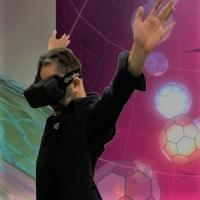
Project highlight
Through more than 20 community-building and research catalyzing activities, the Collaboration for Humane Technologies forged new connections and produced research prototypes and outcomes that have already begun having an impact, including virtual reality experiences for stress reduction and mindfulness; artworks and performances addressing surveillance, climate change, data humanism versus big data, and elder care; mixed reality simulations to improve dementia care; games for full-bodied fitness play; artistic technology projects for inter-generational communication; and much more.
Contemporary Art and Its Publics supported programming over two years that related to the broad theme of contemporary art and its public accessibility, with a special focus on the crucial role of curators and exhibitions. It engaged with the issues of artistic appropriation and mechanical reproducibility and how these issues have altered our relation to and understanding of art.
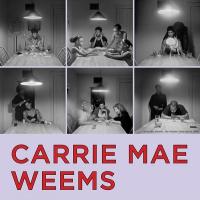
Project highlight
In collaboration with the Department of Art’s Living Culture Initiative and the Visiting Artist Program, Discovery Theme’s Contemporary Art and its Publics Pilot Project co-sponsored an artist talk with Carrie Mae Weems, whose 35 year practice in photography, film, video, performance, text and textiles has interrogated issues of cultural identity, politics and the social consequences of power. Throughout her work, and with an acute sense of how subjectivity and the camera shape cultural narratives, Weems has consistently brought people together to examine the very things that keep them apart. The recipient of a MacArthur Foundation Fellowship in 2013, Weems has been the subject of major exhibitions internationally, including the traveling retrospective, “Carrie Mae Weems: Three Decades of Photography and Video.” Weems’ presentation shattered attendance expectations with over 700 people attending
The Emergence of Number sought to build a world-leading multidisciplinary community within Ohio State with the capacity to stimulate, produce and disseminate outstanding research on the cultural, historical and cognitive underpinnings of human numerical capacities. The project focused on interface issues at the intersection of such disciplines as history, linguistics, logic, mathematics, neuroscience, philosophy and psychology.

Project highlight
The Emergence of Number project brought together researchers from a disparate array of fields to interrogate issues like the evolution of number cognition; the contrasts and similarities between number cognition in humans and other species; the acquisition of number concepts in childhood; and the relationship between language and thought in the numerical domain. The project produced two conferences, one that took place in the summer of 2017 in the ancient walled city of Dubrovnik, Croatia, and the other in June 2018 on the Columbus campus of Ohio State. What emerged from these conferences was a new, multi-institutional network of researchers, a plan to publish joint research and a renewed appreciation of the power of interdisciplinary research to raise new questions and to suggest novel solutions to fundamental puzzles about the human condition
Environmental Humanities aims to build infrastructure that facilitates innovative research, teaching and outreach in this interdisciplinary field. The topical focus of the pilot grant is climate change, with guest lectures, exhibitions, film screenings and special course offerings. The goal of the pilot project is to lay the groundwork for making Ohio State a regional and national leader in Environmental Humanities.
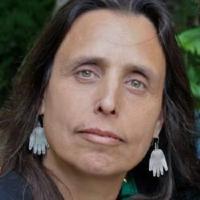
Project highlight
The Environmental Humanities Discovery Theme Pilot Project hosted renowned environmentalist and Indigenous rights activist, Winona LaDuke. LaDuke works on issues of climate change, renewable energy, environmental justice with indigenous communities, and the fight to protect indigenous plants and heritage foods from patenting and genetic engineering. Her talk, “Indigenous Politics Today,” centered on the protests of the Dakota Access Pipeline at the Standing Rock Indian Reservation, the increasing economic and social costs of fossil fuels and the possibilities for imagining more just and resilient societies.
From Homer to the Qur’an expressed the chronological and geographical breadth and inter-departmental scope of this project, which will capitalized on the university’s remarkable strength in ancient studies and built a program of worldwide recognition that benefited not only scholarship and teaching but also broader public understanding of the ancient past and its continuing influence.

Project highlight
From Homer to the Qur’an Pilot Project sponsored “What’s So Funny? Discovering and Interpreting Humor in the Ancient World,” an international conference on humor in the ancient Mediterranean. Four invited keynote speakers and 12 additional guests addressed the nature of humor in the biblical world, ancient Greece and ancient Rome. The topic is a new one for scholars of the ancient world but another element that set this conference apart was that it was conceived of, organized and hosted by doctoral students from the departments of classics, history, and Near Eastern languages and literatures. In consultation with other graduate student organizers, Michael Beshay (history), Michael Biggerstaff (NELC) and Katie Caliva (classics) produced a conference praised by participants.
Human Rights in Transit creates a dynamic knowledge hub to grapple with the complex and multidisciplinary questions raised by the fact that human rights, the human and human environments are in transit. The knowledge hub, is a metaphorical location as well as a method of transmission driven by collaboration, research, teaching and community relationships, shows that knowledge — as well as human rights — is “in transit.”
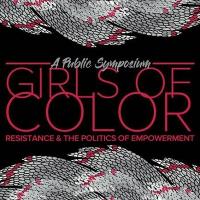
Project highlight
This public symposium sponsored by three Discovery Theme pilot areas: Human Rights in Transit, Environmental Humanities and Transnational Black Citizenship. This all-day event engaged the work of social justice, critical literacy and rhetoric scholars and emphasized the significance of Girls of Color Studies as an emergent interdisciplinary field. Almost 300 people, including students, faculty and community members, attended the symposium.
Migrants and Movers: Humanities and Arts Perspectives on Global Mobility addressed the study of migration to investigate how local cultural factors and decision-making inform global dynamics. The project integrated the insights of the humanities and arts with the social sciences to facilitate a conversation on how to advance the study of global mobility.
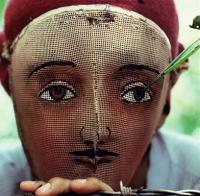
Project highlight
In February 2018, the Global Mobility Pilot Project, in collaboration with the Department of Art, hosted an artist talk and a round table discussion with noted photographer and MacArthur Fellow Susan Meiselas. Her photographs reminded us of the importance and power of bearing witness to our world. Documenting strippers in New England carnivals, conflict in Nicaragua and El Salvador, and the plight of the Kurds in the Middle East, her visually stunning work has been the subject of exhibitions at the Art Institute of Chicago and the Whitney Museum of American Art, New York. Meiselas has been widely acclaimed for her ethical approach to photographing social and political turmoil, displaced peoples and the strength of the human spirit. She has had one-woman exhibitions in Paris, Madrid, Amsterdam, London, Los Angeles, Chicago and New York, and her work is included in collections around the world.
Project Narrative: Applied Narrative Theory enhanced efforts to apply the distinct knowledge and skills of the arts and humanities, especially the knowledge and skills associated with stories and storytelling, in three areas that overlap: narrative medicine, comics studies and collaborative storytelling. The project builds on the Project Narrative program begun in 2006, which has become the world center for the study of stories and storytelling.

Project highlight
This interdisciplinary conference in April 2018 sponsored by Global Arts + Humanities Discovery Theme and Project Narrative helped foster conversations among scholars and students from medicine, classics, English, history, comparative studies, French and Italian, and women’s, gender, and sexuality studies, as well as from institutions across the country and abroad. In addition to two excellent keynotes by Tod Chambers of Northwestern University and Brooke Holmes of Princeton University, the symposium offered lively panels discussing critical spaces for the medical humanities: the bedside, the classroom, the page, the screen and the community
Proposal for Programming Leading to a Science and Technology Studies Center brought together scholars, scientists and engineers from across the university to discuss ideas and create projects that illuminate issues associated with the responsible development and use of science and technology in globally diverse societies and conditions. The project focused on four themes: cultural studies of science and technology; under-representation in STEM; ethical and legal issues arising from advancements in science and technology; and art and technology.

Project highlight
In his talk titled, “Praetor Naturum: Beyond Nature,” visual artist, biologist and environmental educator Brandon Ballengée discussed ecosystem activism, a form of directed action that relies on participatory biological field investigations and laboratory programs that emphasize public involvement. Ballengée is an internationally renowned eco-artist who holds a transdisciplinary PhD in art and biology. In addition to his art work, he has published papers in scientific journals on amphibian mutation. He weds his multi-disciplinary expertise with a commitment to environmental education and activism. This event was co-sponsored by four Discovery Theme pilot projects, including Environmental Humanities, Human Rights in Transit, Collaboration for Humane Technologies and Science and Technology Studies.
Transnational Black Citizenship After Civil Rights and Decolonization Movements engages faculty throughout the university in developing a humanities-based “think tank” that, through pedagogy and research, makes Ohio State a destination for faculty, postdocs and students who are invested in critical studies of transnational black citizenship. This project will analyze the question, "what is blackness?" — which is less about the study of black people than about defining, studying and teaching about blackness in the 21st century.

Project highlight
This two-day colloquium was sponsored by the Transnational Black Citizenship Pilot Project in collaboration with Reconstruction, Inc. It brought together incarcerated citizens (via Skype), returning citizens, students, activists, scholars, service providers and other community members interested in understanding and addressing the issue of mass incarceration. The event aimed to produce a collaborative network positioned to study the carceral state using creative engagement and principled transformation.

